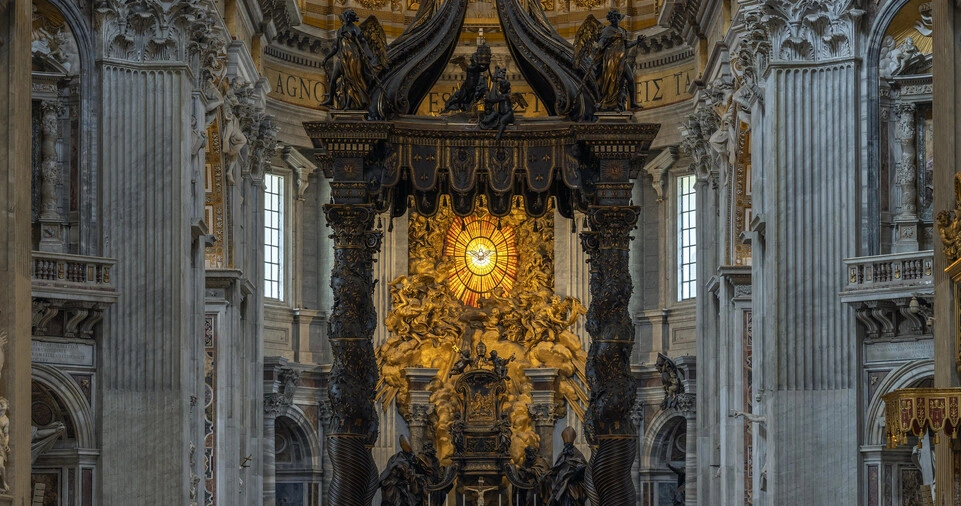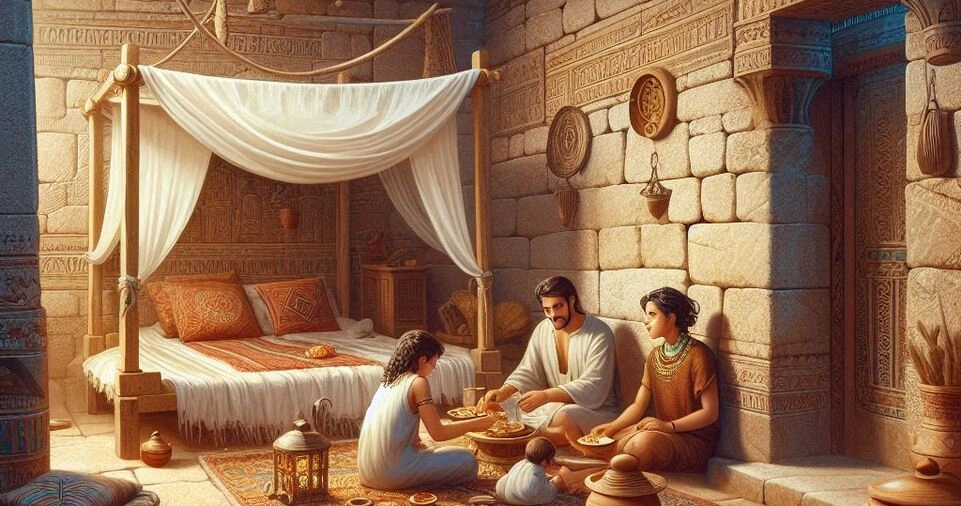Home decor has been a crucial element of human living spaces for centuries, reflecting artistic and aesthetic preferences alongside cultural values, technological advancements, and societal shifts.
The way people design and furnish their homes has continuously evolved, influenced by economic conditions, historical events, and design movements.
From the opulent and grandiose styles of ancient civilizations to the sleek, minimalist, and technology-driven interiors of modern times, home decor tells a fascinating story about human civilization.
The purpose of home decor extends beyond mere beauty; it serves as a means of self-expression, comfort, and functionality.
Different eras have brought unique elements to interior design, whether through intricate patterns, luxurious materials, or innovative space utilization.
Understanding the evolution of home decor helps us appreciate the styles we use today and how they will continue to change in the future.
This article delves into the history of home decor, tracing its transformation from ancient times to contemporary trends while exploring the key influences that have shaped home design throughout the centuries.
Ancient Civilizations: A Foundation for Elegance
Egyptian Interior Design: A Symbol of Wealth
In ancient Egypt, home decor was closely tied to social status. The wealthy adorned their homes with elaborate murals, finely crafted furniture, and intricate gold accents.
Walls were often painted with hieroglyphs and depictions of gods, pharaohs, and nature scenes.
Common decorative elements included alabaster vases, papyrus scrolls, and statues made from precious materials like lapis lazuli and ivory.
Egyptian furniture was highly functional but also artistic. Chairs and beds were ornately carved, often inlaid with precious metals and stones.
Houses of the elite had spacious courtyards with lush gardens, providing both aesthetic appeal and a cooling effect in the hot climate.
The use of symmetry in design and the placement of objects in alignment with spiritual beliefs demonstrated the importance of decor in daily life and the afterlife.
Lower-class homes, while simpler, still embraced the core elements of Egyptian design.
Wooden furniture, linen textiles, and pottery were commonly used, and homes often featured small altars dedicated to deities.
The presence of decorative elements in both elite and modest households shows how ingrained aesthetics were in Egyptian culture.
Greek and Roman Aesthetic Influence
Ancient Greece and Rome took a more structured approach to home decor.
Greek homes emphasized balance and proportion, incorporating columns, frescoes, and sculptures of gods and goddesses.
Interiors were simplistic but elegant, featuring ceramic vases, mosaic floors, and woven textiles.
Public buildings influenced home designs, with geometric patterns and artistic flourishes becoming popular elements in households.
Roman homes took this aesthetic further, introducing grandeur and luxury. Wealthy Romans lived in lavish villas adorned with marble statues, elaborate frescoes, and opulent furniture.
Mosaics depicting myths, nature, and significant events were common floor decorations. Courtyards with fountains and colonnades added to the sense of luxury.
Romans also introduced glass windows and heating systems, showing early advancements in home functionality and comfort.
A key feature of Roman home design was the use of frescoes and painted walls to create depth and dimension in interiors.
The illusion of grand spaces was achieved through trompe-l’oeil techniques, where artists painted realistic landscapes and architectural features.
This era also saw the introduction of built-in furniture such as marble benches and shelving, showcasing early notions of practicality in design.
The Middle Ages: Functionality Over Aesthetics
Medieval Home Design: A Fortress-Like Approach
During the medieval period, home decor prioritized function over style due to the tumultuous and often dangerous times.
Castles and homes were built with thick stone walls to provide security and insulation.
The interiors were sparse, featuring minimal ornamentation apart from practical wooden furniture and large fireplaces that served as the primary heat source.
Tapestries became a crucial decor element, serving both artistic and functional purposes.
They depicted historical events, religious themes, and noble family crests while also helping to insulate rooms from the cold.
Iron chandeliers and candle holders provided lighting, as natural light was scarce due to small, reinforced windows.
In noble households, great halls served as the primary gathering spaces, furnished with long wooden tables, benches, and simple storage chests.
Over time, these spaces evolved to include more personalized touches, such as intricately embroidered wall hangings, woven rugs, and painted furniture.
The Role of Woodwork and Carvings
Despite the era’s focus on practicality, woodwork became an important aspect of medieval decor.
Intricately carved furniture, such as large oak tables and canopy beds, showcased craftsmanship.
Wooden panels and beams added texture to interiors, creating a rustic yet sturdy aesthetic.
While comfort was secondary to security, wealthier individuals incorporated fine textiles like silk and velvet to add warmth and luxury to their living spaces.
ALSO READ: 10 Must-Have Tools for a Beautiful Lawn
The Renaissance and Baroque Eras: Opulence and Grandeur

The Renaissance: A Revival of Classical Beauty
The Renaissance period (14th–17th century) witnessed a revival of classical influences, emphasizing symmetry, proportion, and refined artistry.
Inspired by Greek and Roman architecture, interiors were designed with large windows, intricate ceiling frescoes, and elegant furniture.
Wood and marble were the primary materials used, often sculpted into intricate patterns.
Furniture pieces such as armoires, chests, and ornate chairs became more elaborate, featuring carved detailing and luxurious fabrics.
Walls were adorned with tapestries and paintings depicting mythological or religious themes.
The era also saw the rise of grand chandeliers, often made of crystal or brass, illuminating interiors with elegance.
The Baroque Era: Extravagance and Ornate Detailing
Following the Renaissance, the Baroque period (17th–18th century) introduced an even greater level of extravagance in home decor.
Interiors became heavily adorned with gilded moldings, richly detailed furniture, and lavish draperies.
Ceilings featured elaborate frescoes, while furniture often included intricate carvings, gold leaf applications, and dramatic curves.
Palaces and homes of the wealthy were designed to impress, featuring vast dining halls, decorative mirrors, and opulent silk and velvet upholstery.
The use of bold colors, intricate wall paneling, and sculptural elements created a visually striking aesthetic that defined this period.
The 18th and 19th Centuries: Refinement and Romanticism
The Rococo Influence: Light and Graceful Design
The 18th century introduced Rococo design, a style known for its lightness and elegance.
Unlike the heavy and dark aesthetics of the Baroque period, Rococo interiors featured pastel colors, delicate carvings, and curved furniture.
Floral motifs, gilded accents, and asymmetrical designs became popular, creating a sense of whimsy and charm.
Victorian Era: A Fusion of Styles
The 19th-century Victorian era saw the rise of elaborate and densely decorated interiors. With the influence of the Industrial Revolution, mass production made home decor more accessible.
Heavy draperies, patterned wallpapers, and dark wood furniture characterized Victorian homes.
The Early 20th Century: Modernism and Minimalism Emerge
Art Deco and Mid-Century Modern Design
The early 20th century saw the emergence of Art Deco, a movement characterized by geometric patterns, metallic finishes, and streamlined furniture.
This was followed by mid-century modern design, which focused on functionality, clean lines, and organic shapes.
The Late 20th Century to Present: A Blend of Styles
Contemporary Trends: Personalization and Sustainability
Today, home decor trends focus on personalization, sustainability, and technology.
Scandinavian minimalism, industrial chic, and bohemian aesthetics are popular, while smart homes integrate advanced technology for convenience and efficiency.
ALSO READ: The Top 10 Interior Paint Brands Reviewed
Conclusion: The Future of Home Decor
Home decor continues to evolve, reflecting cultural shifts and technological advancements.
Sustainability and innovation will likely play a major role in shaping future trends, ensuring that home design remains a dynamic and evolving field.



